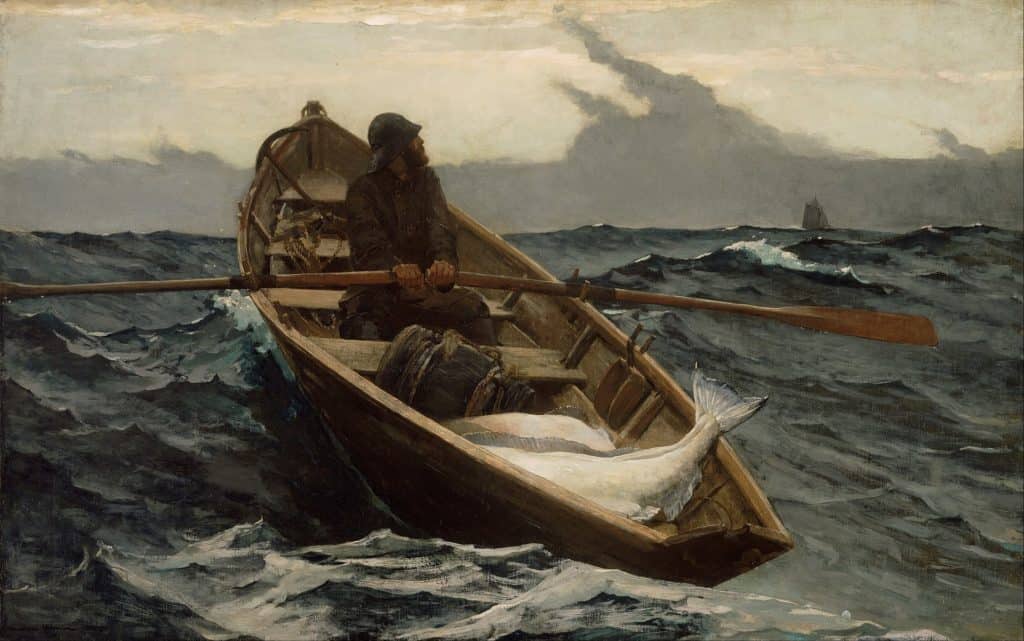Sporting Life

An Autumn Angling Advisory
By Dennis Doyle
The essential phase of any fishing adventure always occurs before you even leave the house: Proper preparation prevents poor performance, as the U.S. Marines are fond of saying. The most critical element of your day, however, is safety.
The first phase of the proper preparation checklist assumes access to the internet. Reliable, timely and accurate information is paramount when preparing a plan for the day’s approach and the internet is the best source for accurate weather and tidal data. Most marine info is real-time readings from buoys and on-site weather gear. Refer to weather data before your trip and always review again before you leave.
Your first search will be for the day’s general weather in your location. The temperatures overnight and the forecast for the day are the first conditions to evaluate. If the overnights are in the 65- to 75-degree range you are in luck, that is the preferable range for September. Well over that range or well under tend to present a problem. Anything near 60 degrees or less overnight is going to be uncomfortable early in the morning. The day will quickly become warm in September but you will have to don heavier clothing to begin, especially on open water. Don’t think about toughing it out if you’ve under-dressed. It doesn’t take long for your inner core temperature to drop and hypothermia to set in. And remember, one of the very first symptoms, aside from rapid shivering, is poor mental acuity. You are more likely to make poor decisions.
Over 90 degrees may be unusual this time of year but it’s not exceptional. Heatstroke remains every bit as deadly as its opposite. The very young and old are the most vulnerable to both. Cold drinks, shade, proper clothing and caution are the keys for dealing with high heat.
Next on your list is wind speeds causing rough and possibly dangerous water—I avoid anything over 12 knots. I have a small boat but even in larger crafts wave conditions can quickly become uncomfortable over 15 knots, depending on direction.
Reach is a wave condition caused by the interaction of the wind over distances of open water. Bay waters are most drastically affected by winds over the length of the Bay from the northwest and southeast. Long reaches will produce the biggest and steepest waters out in the open Bay and in areas of concentrated high tidal currents (rips) opposing the wind direction. On windy days you can avoid the worst of it by fishing the lee shores and up into the tributaries but keep in mind you may have to travel through some rough water to get there.
Tidal phases can be important to all types of fishing so keep in mind the transition phase from incoming to outgoing and its opposite during which there will be mixed or no tidal current. As a rough rule you’re going to encounter these dead or slack waters about an hour and a half after the scheduled full flood and ebb tides and the bite invariably dies at those times. There’s no way of avoiding the transition periods without traveling long distances. Just be aware they’re going to happen and adjust your expectations.
The weather and tidal data for the Bay is detailed and accurate under normal conditions but also know that if it’s been blowing stiffly out of the north or south for a few days the incoming and outgoing can be off by as much as hours. The best remedy for periods immediately following windy weather is to talk to someone who’s been out there and be ready to adjust your day.
It’s fall, the fishing is great but be careful out there.
*****
Fishfinder:
The rockfish bite is the best of the year since many factors have kept lots of anglers off the water this season. The result is that our rockfish and white perch have avoided the intense pressure and associated mortality of a normal year of recreational angling. Estimates vary but generally the figures say that sport fishing harvests are down 50 percent. Commercial fisheries have been permitted to take their full allocation (over 50 percent) but on the whole the rockfish population has benefited and the fall season looks to be excellent. Live lining is particularly hot right now and as long as the Norfolk spot stay around to provide us with the best bait, the chances of some good catches are as good as they’ve been all year. The next best technique is chumming with ground menhaden and using cut, fresh menhaden (a.k.a. bunker, alewife) as bait on the bottom. Circle hooks remain mandatory and remember the limit remains at one rockfish, 19 inches or more. Trolling and jigging metal and soft plastics are also productive tactics and getting good results. White perch are schooling well, some still in the tribs along structured shorelines but others schooling in deeper water for wintertime. They’ll take small spinnerbaits in the shallows and worms, shrimp, clams and crab in depths to 25 feet and deeper. Crabbing remains mostly moribund but if enough survive a mild winter, things may be better in 2022. Good fishing all. Winter is coming.
